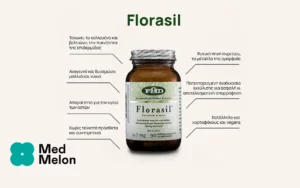Scientific Names of Buckbean Leaves:
Menyanthes trifoliata L. [Fam. Menyanthaceae]
Forms:
Bitter-tasting leaves of the buckbean (bogbean) plant.
Traditional Usage:
– Anorexia
– Anti-inflammatory
– Appetite Loss
– Astringent
– Bile Deficiency
– Bleeding (internal)
– Bone and Joint Disorders
– Dyspeptic complaints
– Fevers
– Lack of appetite
– Liver Cleansing
– Rheumatism
– Skin Diseases
– Weight Gain
– Worms
– Wounds (externally)
Overview:
Buckbean, Menyanthes trifoliata L. [Fam. Menyanthaceae], otherwise known as bogbean, is found in bogs and shallow waters of many areas throughout the northern temperate zone. The drug of commerce largely originates from the former USSR, Poland, former Yugoslavia and Hungary. The dried leaf or root tea was traditionally used as a digestive tonic, and was also used to treat fevers, rheumatism, liver ailments, worms, skin diseases and as an astringent to stop bleeding. The fresh plant causes vomiting, however the dried leaves and root contain phenolic acids that science confirms have bile-secreting, digestive tonic and bitter qualities. The German Commission E recommends buckbean leaves for treating lack of appetite and dyspeptic complaints. The effects of the infusion and other bitter-tasting preparations for internal use noted by the Commission E are that it stimulates the secretion of gastric juice and saliva. The British Herbal Pharmacopoeia (1990) and British Herbal Compendium (1992) also list bogbean 9 Menyanthes trifoliata L.) as a bitter drug for treating loss of appetite, anorexia and dyspepsia. They also note the application of the drug for treating muscular rheumatism. Menyanthe feuille is also listed in France for stimulating appetite and facilitating weight gain. Buckbean was also used traditionally as a food and medicine by aboriginal peoples of British Columbia and Alaska. An extract made by boiling buckbean was used to treat stomach ailments – and it was thought that it would make a person gain weight. The stem and root were also ground, boiled and taken 3 times daily for spitting of blood. The plant contains several anti-inflammatory compounds, which may explain its traditional use for treating rheumatism. The root may be used as a cooked vegetable and source of flour, although it is only recommended to do this in extreme need, as it is protected in the U.S.
Active Ingredients:
Buckbean contains: The secoiridoid glycosides dihydrofoliamenthin, menthiafolin, and loganin, although foliamenthin is found only in the rhizomes not the leaves. The monoterpenoid alkaloids gentianine and gentianidine arise during the isolation procedure. Other ingredients include small amounts of tannins; flavonoids; triterpenes including the betulinic acid derivative menyanthoside, the main saponin of the rhizomes; coumarins – those isolated from the aerial parts include, scoparone, braylin, and scopoletin; loliolide, a degradation product of xanthophyll; phenol-carboxylic acids; as well as ubiquitous substances.
Suggested Amount:
Tea: Pour boiling water over 0.5-1 g of finely chopped dried Buckbean leaves or add cold water and boil for a short period. After 5-10 minutes strain the tea and take one unsweetened cup 1/2 hour before meals.
Daily Dose: 1.5-3 g drug; preparations with an equivalent bitterness value. Unless otherwise prescribed.
1 Teaspoon = ca. 0.9 g.
Drug Interactions:
A recent scientific publication lists buckbean as an herb that may interact with warfarin and counteract its blood thinning effects. [Heck AM, DeWitt BA, Lukes AL. 2000. Potential interactions between alternative therapies and warfarin. Am J Health Syst Pharm. 2000 Jul 1; 57(13): 1221-7; Review.]
Contraindications:
None Known.
Side Effects:
No side effects are known at recommended dosages. However, in high dosages, the drug may have a laxative effect and it is contraindicated in cases of diarrhea, dysentry and colitis.
References:
Bradley PR (ed). 1992. Bogbean. In British Herbal Compendium. Volume 1. A Handbook of Scientific Information on Widely Used Plant Drugs. British Herbal Medicine Association, Bournemouth, Dorset, pp. 41-42.
Foster S, and Duke JA. 1990. Buckbean, Bogbean in Medicinal Plants. Houghton Mifflin Co., New York, NY, p. 14.
Huang C, Tunon H, Bohlin L. 1995. Anti-inflammatory compounds isolated from Menyanthes trifoliata L. Yao Xue Xue Bao. 1995; 30(8): 621-6.
Pojar, J. and A. MacKinnon (Eds.) 1994. Plants of Coastal British Columbia, including Washington, Oregon and Alaska. Publ. by Lone Pine Publishing, 202A-1110 Seymour Street, Vancouver, B.C., Canada, V6B 3N3. Pp. 339.
Wichtl M and NG Bisset (Eds). 1994. Menyanthidis folium – Bogbean. In Herbal Drugs and Phyto-pharmaceuticals. (English translation by Norman Grainger Bisset). CRC Press, Stuttgart, pp. 339-341.




